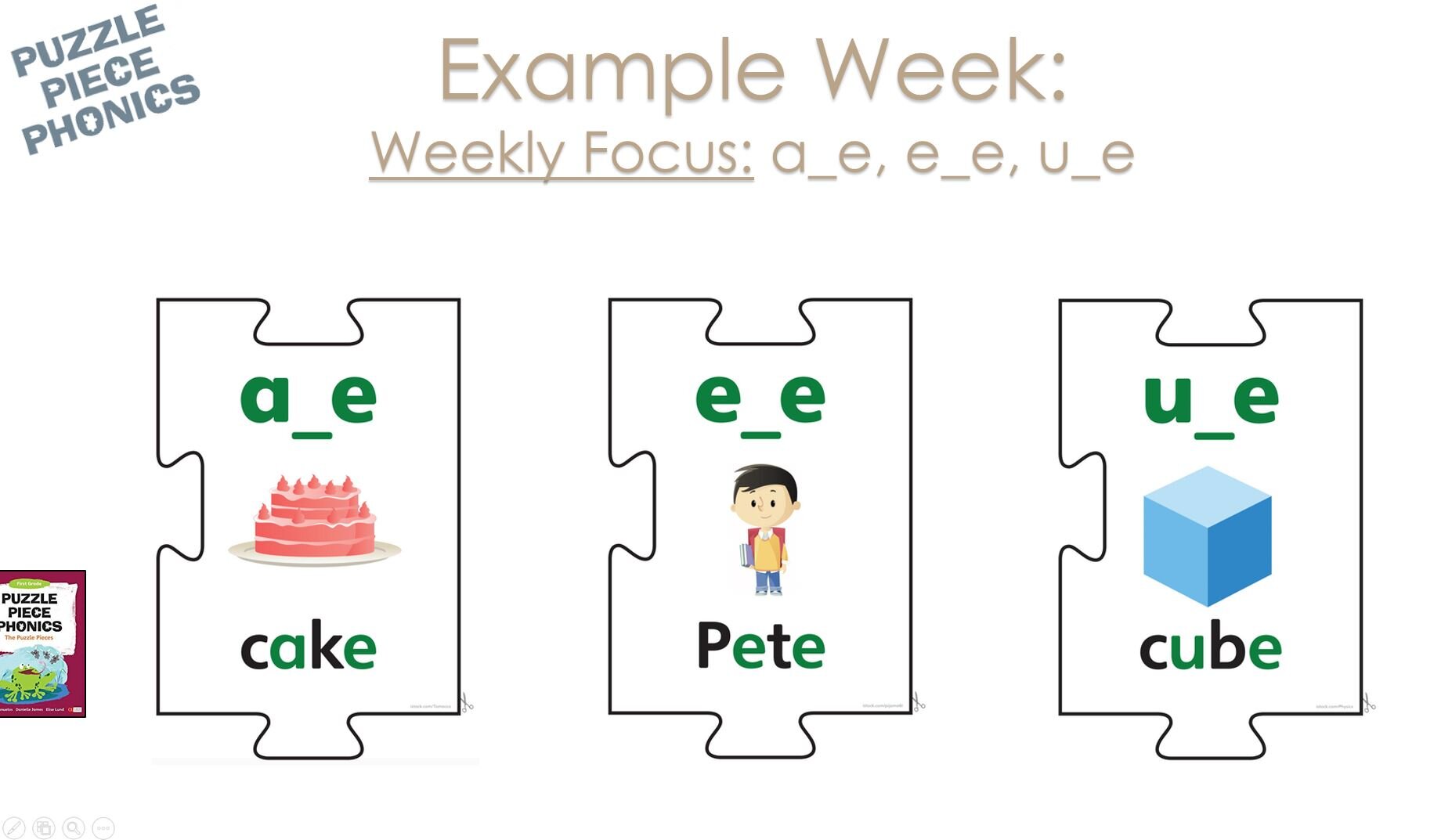
"As a first grade teacher, I was frustrated that my basal would introduce sound spellings and only focus on them for a day. The pace was way too fast for some of my students. This program not only gives students repeated practice with the sound spellings throughout the week, but it holds them accountable to learn those spellings. Unlike another spelling program I once used, students of all abilities are exposed to consecutively harder lessons, and are having success with higher leveled spelling patterns. The fluency poems are fun and draw the students in, making them want to read! They are always begging to read them to me. I would highly recommend this program to anyone."
— Tamera Marsden, First Grade Teacher
What Makes Puzzle Piece Phonics Work?
Teacher Components
The Teacher's Guide streamlines the instructional routines that are the cornerstone of Puzzle Piece Phonics, and outlines simple directions for implementing the daily lessons. The practice routines ground the instruction in research and quickly become second nature to teachers and students. Puzzle Piece Phonics spans approximately thirty-five weeks of instruction and is organized around the essential phonics concepts for each grade:
The Puzzle Pieces show an image of an object, the spelling of the word, and a color-coded sound pattern to help demonstrate the key rules of phonics to children. The color codes help students organize their understandings about what makes up a word. The puzzle pieces become part of a classroom reference wall once they have been formally studied and prominently displayed for a week.
The Word Explorer Poem stanzas of each poem invite students to identify and practice the important letter-sound concepts learned in Kindergarten, 1st, and 2nd grades, making phonics fun for young students, and reinforcing concepts. The adorable illustrations bring the poems to colorful life, and encourage fluency practice and discussion.
Student Components
The Learner's Notebook is a place where students rehearse phonics patterns, build their vocabularies, practice breaking words into syllables, and apply knowledge of word structure to decode and encode words. Young children can self-check their work so that they—and their teachers—know where they are in developing their understanding of focus patterns.
The Fluency Notebook is designed to be used for choral readings and independent fluency practice, The Kindergarten Fluency Notebook includes chants, couplets, passages, and poems accompanied by whimsical, images that support learners as they match picture to text. The First Grade Fluency Notebook, includes a collection of 140 authentic poems. The Second Grade Fluency Notebook contains “Reader’s Theater” stories that are designed to be used as the basis of reading and small group fluency practice.



























